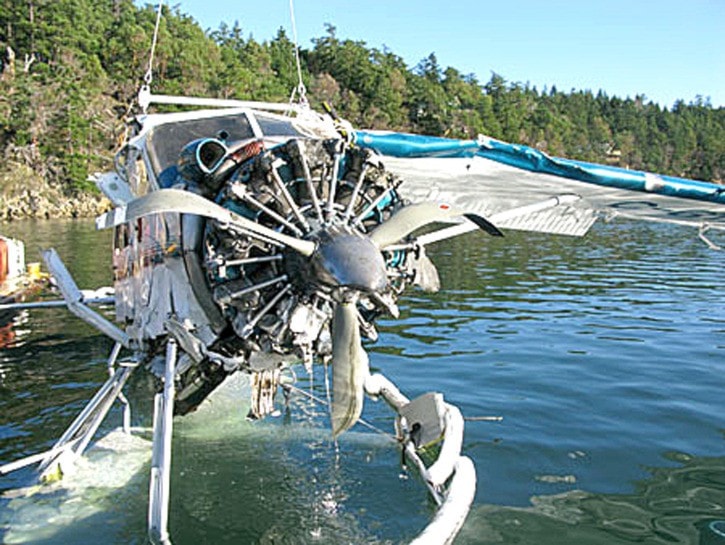Seaplane passengers deserve to have the best chance of surviving a crash.
That is the gist of recommendations announced last month by the Transportation Safety Board, which suggests that passengers should be made to wear life-jackets and that all new and existing float planes be fitted with quick-escape exits in the event of a crash.
The recommendations were announced March 17 – nearly 16 months after the crash that killed White Rock’s Tom Glenn, former Semiahmoo Peninsula resident Dr. Kerry Telford and six others.
Glenn and Telford – and Telford’s infant daughter – were among eight people onboard a de Havilland Beaver floatplane Nov. 29, 2009 when it crashed off Saturna Island shortly after takeoff from Lyall Harbour. The pilot and Glenn’s wife, Barb, were the only survivors.
According to findings presented by TSB investigator Bill Yearwood, a number of factors contributed to the crash and the six deaths. Those included that a light, which typically warns of an impending stall, was not working the day of the crash, giving the pilot little time to react and recover from an “aerodynamic stall” of the wing (in which the left wing suddenly lost its tilt and dropped); two or four of the aircraft’s doors were jammed shut; the doors and windows could not be quickly removed; and, none of those onboard were wearing life-jackets.
“Everyone survived the impact, but six of the eight onboard drowned. They never got out of the aircraft,” Yearwood stated in his presentation. “We’ve seen this before and that is why we focused our investigation on the risk of drowning in floatplane accidents. We know the risk is high and we know it is twofold.”
Safety board chair Wendy Tadros said too often, passengers survive the impact of such crashes only to drown because they either can’t get out or have no means of staying afloat until help arrives.
“This is not acceptable,” Tadros said. “More can and must be done to increase the chances of surviving a crash on water. That is the thrust of our recommendations.”
According to the report, 76 people – including the six killed in the Lyall Harbour crash – died in 109 commercial float plane crashes in Canada between 1989 and 2010.
Tadros said the three most recent crashes, which killed a total of 15 people – “more than any before… shook public faith in the safety of floatplanes.”
Since the Lyall Harbour crash, Transport Canada has upgraded its education materials. Tadros described steps taken within the float-plane industry were “even more encouraging.” Those include the formation of an association aimed at improving safety on the west coast; the installation by some operators of improved door handles and pop-out windows; and the move by some operators to provide passengers with, and require them to wear, personal flotation devices.
Transport Canada is expected to respond to the recommendations within 90 days.
